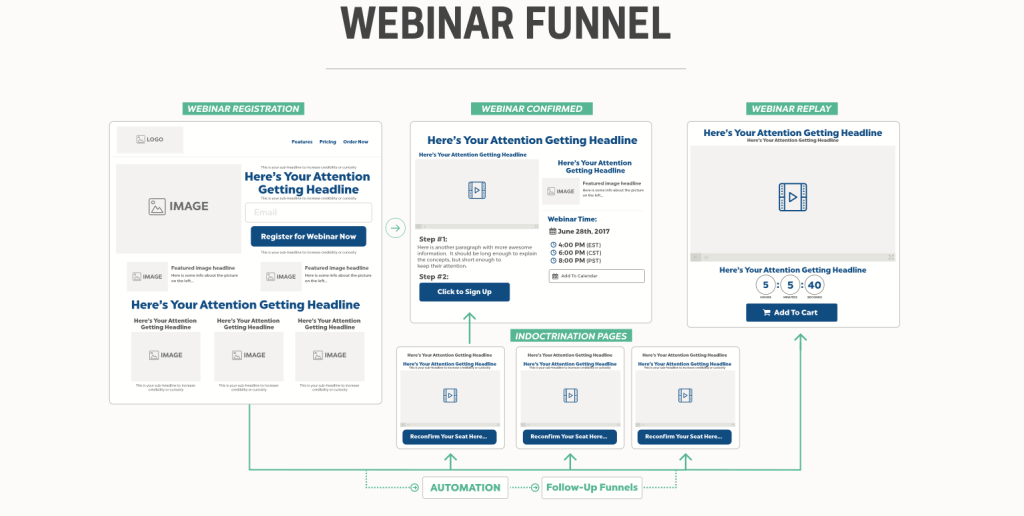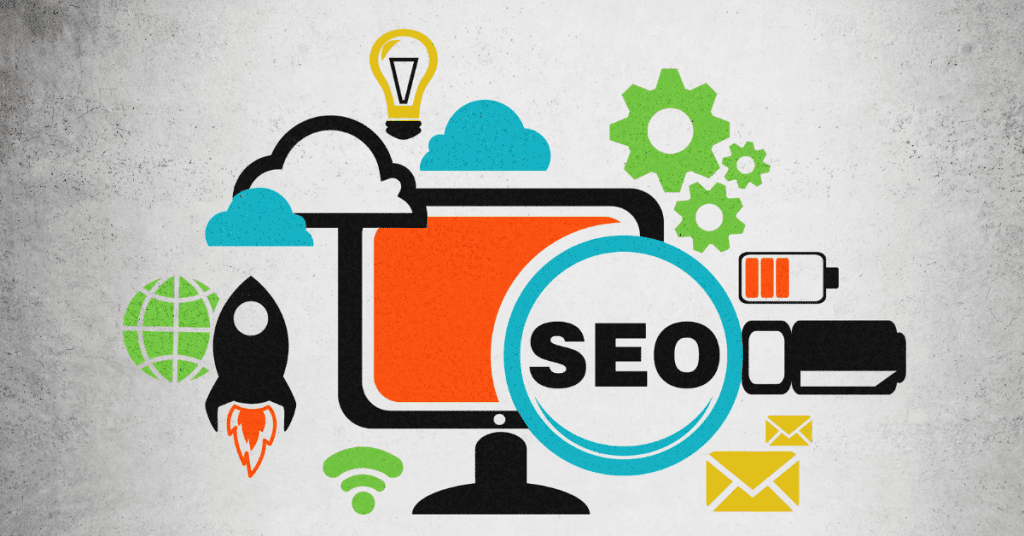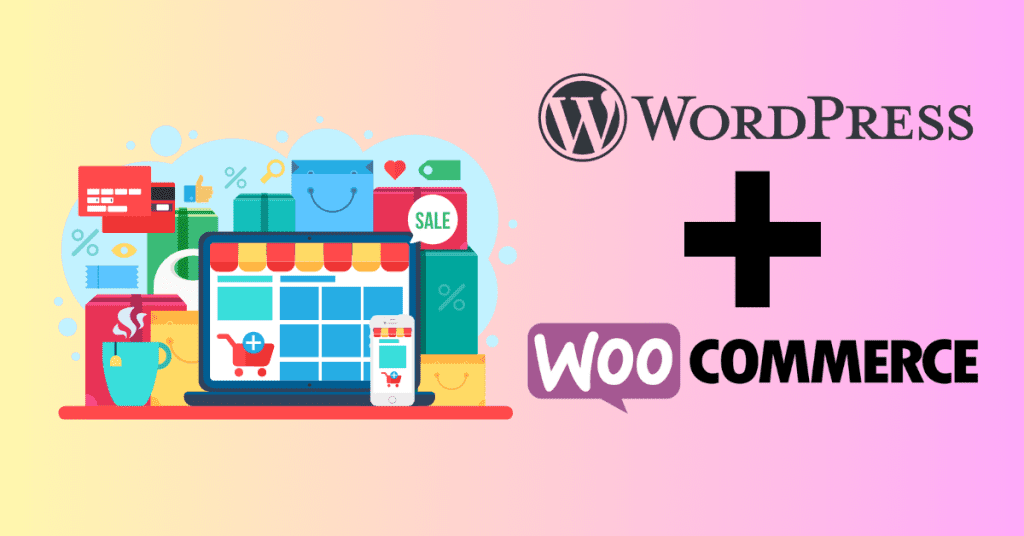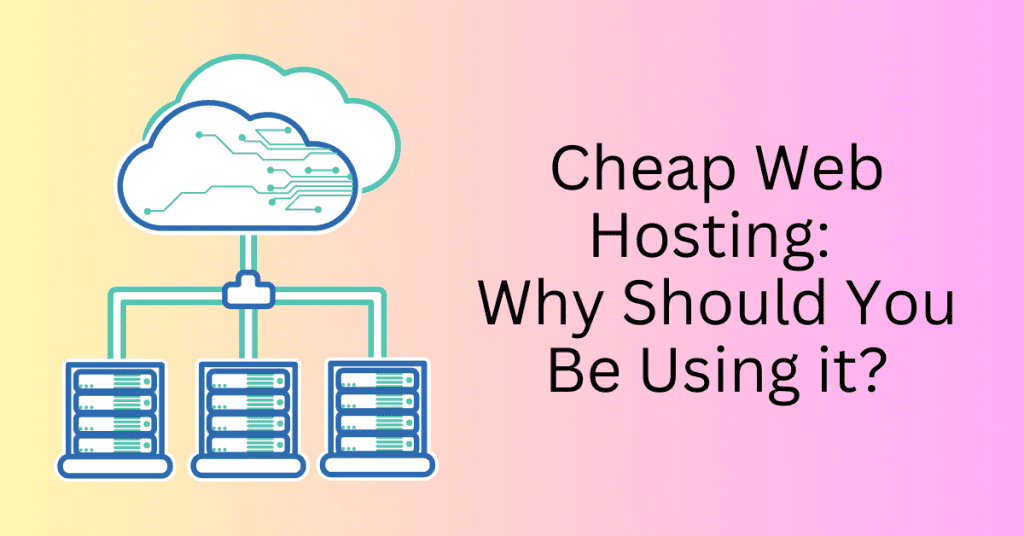Acquiring new customers is a necessity for sustained growth and success for all businesses. With the myriad of marketing strategies available, one approach stands out for its systematic and efficient nature – the sales funnel. Whether you’re a seasoned marketer or a business owner looking to optimize your customer acquisition process, this guide will equip you with the insights and strategies needed to build and deploy a successful sales funnel tailored to your unique business goals.
If you’re aiming to transform potential leads into devoted customers, understanding and harnessing the power of a well-designed sales funnel is paramount.
In this blog, we’ll delve into the fundamentals of sales funnels, exploring how to guide your potential customers through different stages of the sales funnel and different sales funnels you can use for customer acquisition.
Understanding the Customer Acquisition Sales Funnel

The customer acquisition sales funnel is a strategic framework designed to guide potential customers through a series of stages, starting from awareness and culminating in a successful conversion. This structured approach allows businesses to systematically nurture leads, build relationships, and ultimately turn prospects into paying customers.
By comprehending the nuances of each stage, you can tailor your marketing efforts to address specific customer needs and pain points, resulting in a more effective and efficient acquisition process.
1. Awareness Stage
Firstly, at the top of the sales funnel, the awareness stage is all about grabbing the attention of potential customers. This is the moment when you strive to make your presence known through various marketing channels such as social media, content marketing, and paid advertising.
Creating engaging and informative content is key to attracting a broad audience and sparking interest in the brand. The goal here is not immediate conversion but rather to introduce your brand and establish a connection with the target audience.
2. Interest and Consideration Stages
Then, as potential customers move into the funnel, the focus shifts to capturing their interest and providing them with valuable information. This involves offering free resources, such as ebooks, webinars, or email newsletters, to encourage lead capture.
In the consideration stage, you will delve deeper into addressing the specific needs of leads. Case studies, testimonials, and detailed product or service information become crucial in showcasing the value proposition. The goal is to nurture leads and guide them toward the next stage of the funnel.
3. Decision and Action Stages
In the decision stage, leads are on the verge of making a purchase decision. Here, you will need to provide compelling calls-to-action, limited-time offers, and clear paths to conversion. It’s essential to address any lingering concerns and highlight the unique selling points that differentiate the brand.
Finally, the action stage, at the bottom of the funnel, is where the conversion occurs. Streamlining the purchasing process, providing excellent customer support, and ensuring a positive customer experience are paramount to turning leads into satisfied customers.
Optimizing and Iterating
Successful implementation of the customer acquisition sales funnel requires continuous optimization. You should leverage data analysis tools to monitor and evaluate the performance at each stage. A/B testing, personalization, and marketing automation play vital roles in refining the funnel’s efficiency.
Additionally, gathering customer feedback provides valuable insights into areas that may need improvement or enhancement. The customer acquisition sales funnel is not a static model but a dynamic framework that evolves based on customer behaviour, market trends, and the ever-changing landscape of business.
Sales Funnel Examples for Customer Acquisition
The above is just a brief explanation of the sales funnel for customer acquisition. However, to make it work, you will need to design and build the sales funnel so that we can acquire new leads or customers for your business.
Here are five proven sales funnels that you can use to grow your business:
1. The Squeeze Page Funnel – Customer Acquisition Sales Funnel
The squeeze page funnel is the most popular sales funnel out there because it’s so simple and easy to build. It only consists of two pages.
- Page 1: A squeeze page.
- Page 2: A thank you page.
On the first page, you will have a simple offer, usually free to capture their contact details. Besides, you will have a contact form embedded on the squeeze page or a pop-up to collect their contact details. This will then let them to provide you with their contact details. You will need to give them a reason to provide you their personal information.
This is where we offer them a lead magnet. A lead magnet is something you offer them to get their contact details. It’s something high perceived value, but very easy for you to reproduce. Normally, a digital product like a cheat sheet, guide, webinar or ebook that you create once and they can get access to it without costing you anything.
After getting their contact details, you will send them to a thank you page. You must have a short video on this page. This is because it will let them know what they subscribed to and who you are. This will create a connection between you and them easily.
In the video, you can explain what to expect from your upcoming email. This will also includes your email subjects, contents, and what they subscribed to. By doing this, you give a brief introduction to your email list. This will make it easier to look for your email in their inbox.
2. The Reverse Squeeze Page Funnel – Customer Acquisition Sales Funnel
The reverse squeeze page funnel is very similar to the squeeze page funnel. It consists of two pages also.
- Page 1: A squeeze page.
- Page 2: A thank you page.

But the difference here is instead of getting their information first and explaining what to expect on your thank you page, you explain everything on the squeeze page itself.
And to persuade them to give you their emails, you will tell them apart from what you are giving in your lead magnet, you will also tell them what additional free value you are providing to them.
Typically, you will include the video on your squeeze page so your potential customers can watch it even without opting in. And that will be your video sales letter to sell your lead magnet.
3. The Product Launch Funnel – Customer Acquisition Sales Funnel
A product launch funnel is a series of pages that you send to your email list before the official launch of your product. It’s like the movie trailer before the official release. In each trailer, your audience will be able to get a glimpse of the upcoming product launch. This will build their excitement towards the product before the official launch.
A product launch funnel will consist of 8 pages.
- Page 1: A squeeze page.
- Page 2: Video #1.
- Page 3: Video #2.
- Page 4: Video #3.
- Page 5: Video #4.
- Page 7: A product order page.
- Page 8: An order confirmation page.

The first page will be a squeeze page to bring your potential customers into your email list where will send them different videos to view every day or every other day until your product launch date. Hence, you can start the product launch funnel two weeks from your product launch date and build the hype within those two weeks.
Don’t drag it too long as people may lose the excitement if it’s too long. And during the process, you will persuade them about the benefit of your product and how it benefits them.
All these actions are important to get them to buy from you during your product launch.
4. The Survey Funnel – Customer Acquisition Sales Funnel
A survey funnel creates engagement with your visitors before they give you anything. Typically when someone reaches your survey page from your ads, they don’t know you and may not trust you yet.
Through a survey funnel, they will go through the survey with you and during the process, their resistance will be lower after giving you answers for the survey. At the end of the survey, hoping for an accurate result, they will give you their contact details.
The survey funnel allows you to direct potential customers to different sales funnels from a single starting point. It will consist of
- Page 1: A survey.
- Page 2: A squeeze page based on the survey results.
- Page 3: A thank you page based on the survey results.
For your survey, you can
- Ask them who they are.
- Ask them about the situation they are in.
- Ask them what is their skill level.
- Ask them what they are struggling with.
- Ask them what they are struggling with on a personal level.
- Ask them something that you are curious to learn about them.
All these are important to know more about them and send them to the right offer at the end of the survey. They are looking for a solution anyway, so make it personal to give them the best solution to their problems.
5. The Webinar Funnel – Customer Acquisition Sales Funnel
The webinar funnel is one of the most useful sales funnel. This is because a webinar has the highest perceived value as your audience is going through the entire webinar with you. And of course, a webinar ticket usually sells for a few hundred dollars. Hence, the webinar participants will appreciate more when joining it.
The webinar funnel is a funnel where you use a webinar as your lead magnet. A webinar funnel will have three pages.
- Page 1: A webinar registration page.
- Page 2: A thank you page.
- Page 3: A webinar page.

During the webinar, you will provide tonnes of values to gain trust and credibility. Don’t rush to sell first. In the webinar, you should spend 90% of the time giving value to your participants and creating engagement with them. At the end of the webinar, you can pitch your offer and direct the attendees to the sales page.
You can do one webinar a day or alternate day. But when you see the effectiveness of a webinar and how easily you can launch one, you may even do more than one webinar a day.
Here are a few tips on how to create a high-converting webinar funnel:
Provide a lot of free value in the webinar.
A webinar or a live event is a session where your potential customers will be with you for one to two hours or even days and listen to your pitch. Those who registered and joined your webinar actually put lots of effort into joining it on time. They might sacrifice their other activities to join it on time. Hence, don’t upset them or they will leave forever.
In your webinar, you want to demonstrate how much value you are providing them for the free session. And prove to them that your product is worth the price and that there will be more value in the paid product. Not only that, when someone joins a webinar, paid or free, they are expecting to learn something. Make sure you satisfy their expectation. And they will trust you as the authority in your niche.
Use a proven webinar script
For the entire webinar, you are not going to talk about the product or service that you are going to sell at all. Instead, you should focus the entire session on teaching them something. And, only at the end of the session, do you start pitching your product and service.
You can do this by using the script below:
“We are almost ending the session today. I hope that you enjoyed the session and learned something today. But before you leave, I’d like to offer you guys something that I’m really excited about. Something that has benefited many people worldwide and you will definitely benefit from it as well. But I don’t want to do it without your permission. Is that ok for me to share a bit about the {product/service}? Just type ”YES” in the chat bar”
At this point in time, since you already provided them with so many values in the session, most will say “YES”. Even if there is no one that says “YES”, you can still proceed with the pitching
“Well, I don’t want to take up too much of your time. But I really think this is going to be a game-changer for you. I will spend 10 minutes showing you this offer I put together?”
Now if there is little no one that replies “YES”.
Then you have a problem. Your webinar fails and you fail. It would be best if you go back to the drawing board and see what was wrong with your webinar presentation.
Follow Up After Your Webinar
And now, if some of the attendees bought, congrats. For those who can’t make up their mind and make a purchase instantly, you will then need to follow up with them.
Listen to their objections and why they cannot make up their mind. By getting this feedback, you can address it in your next webinar and your email sequence to get them to buy your product or service.
And for all the attendees, whether they purchase your product or not, you should continue to nurture them and build relationships with them via email. In your email, you should always provide value to them and build your credibility.
That way, you will be on their radar and when they need a solution, you are there for them.
Also, if you want to learn more about growing your online business via
Maximize Your Customer Lifetime Value (CLV) With the Value Ladder Sales Funnel
I first read about the concept of the Value Ladder sales funnel from Russell Brunson’s book, Dotcom Secrets. And it was also the basics that Russell used to build his 8-figure business.
In short, the value ladder sales funnel consists of four stages:
- Bait. You offer the potential customer your lead magnet in exchange for their email address.
- Frontend. You offer the potential customer your least expensive and least valuable product or service.
- Middle. You offer the customer a more expensive and more valuable product or service.
- Backend. You offer the customer your most expensive and most valuable product or service.
Ideally, you also offer a continuity or subscription program that generates recurring revenue. And in between the offer, you can also add downsells, upsells and cross-sells to increase your revenue.
Different Stages of Value Ladder Sales Funnel
The Value Ladder is essentially a strategic way of offering products or services at various price points. With each level, you are providing more value than the previous one. It’s like inviting customers to climb a ladder of value, ascending from lower-priced, entry-level offerings to higher-priced, premium products or services.
At the bottom of the ladder, you have your entry-level or introductory products. Basically, these are often priced affordably and serve as the initial point of contact with your audience. The goal here is to attract a wide range of customers and initiate a relationship. Once they’ve experienced the value of your entry-level product, they’re more likely to ascend to the next level of the ladder.
Moving up the ladder, you will then introduce products or services with more features, benefits, and consequently, a higher price tag. This is the middle tier, where customers who have already engaged with your brand are willing to invest more for additional value. As they climb the ladder, the relationship deepens, and your customers become more invested in what you offer.
At the top of the ladder, you have your premium offerings. These are your high-ticket items, providing the utmost value and often personalized experiences. Customers who have ascended the ladder are more likely to invest in these premium products because they trust your brand and have experienced the value you consistently deliver.
The Value Ladder Sales Funnel, therefore, becomes a systematic way of maximizing customer lifetime value. This is done by guiding them through a progression of offerings that align with their evolving needs and budgets.
Join the Free Your First Funnel Challenge Now
Top Ways to Drive Traffic to Your Sales Funnel
Here are some common ways to drive traffic to your sales funnel:
1. Search Engine Optimization (SEO):
Enhancing your website’s visibility through effective Search Engine Optimization (SEO) is a fundamental strategy for driving organic traffic to your sales funnel.

Firstly, you must conduct keyword research to understand the terms your target audience uses when searching for products or services like yours.
Then, optimize your website content, meta tags, and images to align with these keywords. You will need to publish fresh, relevant content that caters to user intent regularly. As your website climbs the search engine rankings, you’ll attract users actively seeking what your sales funnel offers.
2. Pay-Per-Click (PPC) Advertising:
Supplementing organic traffic with targeted Pay-Per-Click (PPC) advertising can immediately boost your sales funnel. In general,. platforms like Google Ads and social media ad networks allow you to create highly targeted campaigns. You can then develop compelling ad copy and use precise audience targeting to reach users who are likely to be interested in your offerings.
With PPC, you have the flexibility to set budgets, track conversions, and adjust your strategy in real-time, ensuring a cost-effective approach to driving traffic to your sales funnel.
3. Content Marketing and Social Media:
Creating and sharing valuable content across various channels, including blogs, social media, and video platforms. This is in fact a potent way to attract and engage potential customers. You can develop a content calendar that aligns with your sales funnel stages, addressing the needs and interests of your audience at each step.
Utilize social media platforms to share your content, engage with your audience, and build a community around your brand. This approach not only drives traffic but also establishes your business as an authority in your industry, fostering trust and loyalty.
4. Email Marketing Campaigns:
Email marketing remains a powerful tool for driving targeted traffic to your sales funnel. For instance, you can build and segment your email list based on customer preferences and behaviour. Then, craft compelling email campaigns that guide subscribers through the various stages of your sales funnel, offering valuable content and promotions along the way.
Subsequently, personalize your messages to resonate with different segments of your audience. This will also increase the likelihood of conversion. With the right approach, email marketing becomes a consistent source of traffic and a valuable tool for nurturing leads.
5. Influencer Collaborations:
Partnering with influencers in your industry can provide a significant influx of traffic to your sales funnel. Identify influencers whose audience aligns with your target market, and collaborate on content or promotions.
Influencers can introduce your brand to a new audience, leveraging their trust and credibility. This strategy not only drives traffic but also adds a social proof element to your brand, influencing potential customers to explore your sales funnel.
Build Your First Sales Funnel in Just Five Days!
A well-constructed sales funnel is not a one-size-fits-all solution. Rather, it’s a dynamic tool that can be tailored to fit the unique contours of your business and audience. From the initial spark of awareness to the final flourish of conversion, each stage in the funnel plays a crucial role in guiding potential customers toward becoming loyal advocates for your brand.
As you implement the strategies outlined in this guide, keep in mind the essence of building lasting relationships with your customers. Customer acquisition is not merely about numbers; it’s about creating meaningful connections, addressing needs, and delivering value consistently. Your sales funnel is not just a mechanism for transactions; it’s a tool for cultivating trust, loyalty, and advocacy.
In conclusion, using a sales funnel for customer acquisition is an ongoing process of refinement, optimization, and innovation. Building a sales funnel from scratch can seem like a daunting task.
You can join the Your First Funnel Challenge for free where Russell walks you through it step-by-step. And all in just five days. There is nothing to lose and even though it’s a free challenge, Russell presents it very well and you definitely can follow through the challenge and launch your first funnel.





